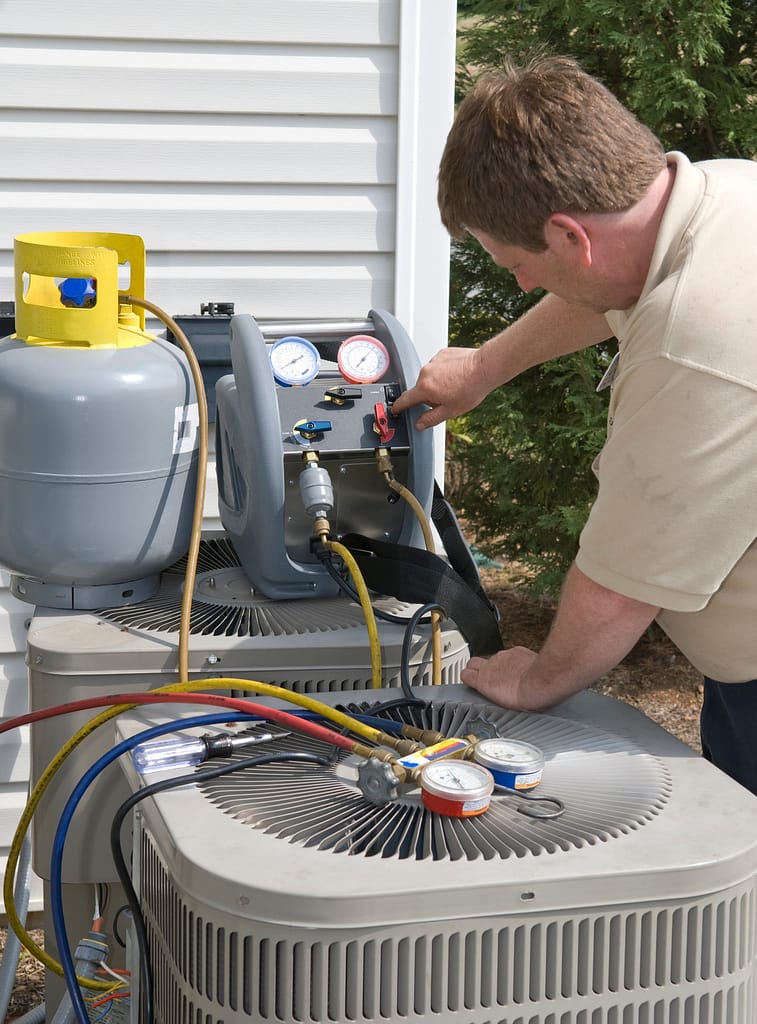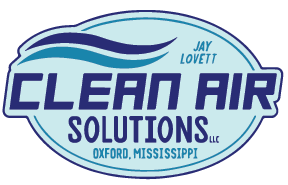
Understanding HVAC Systems and Furnaces
HVAC systems, which stands for heating, ventilation, and air conditioning, are complex systems that encompass a comprehensive range of functions. These systems are designed to provide heating, cooling, and ventilation to homes and buildings, making them versatile and multifunctional. For example, an HVAC system can efficiently cool a building in the summer, heat it in the winter, and keep the air quality high year-round. In contrast, furnaces are specifically engineered for the sole purpose of heating using gas or oil, with a focus on delivering warmth during colder months.
When it comes to installation, HVAC systems are generally more expensive to install compared to furnaces due to the integration of multiple functions. The installation process of an HVAC system also requires expertise and takes longer compared to furnaces. On the other hand, furnaces are known for their more straightforward and cost-effective installation process, making them a more budget-friendly option for those primarily seeking a heating solution. It’s essential to consider these differences when deciding between an HVAC system and a furnace, especially in terms of functionality, installation, and long-term maintenance costs.
Components of HVAC Systems and Furnaces
HVAC systems are equipped with an array of components to facilitate their heating, ventilation, and air conditioning functions. These components include coils, which play a crucial role in the heat transfer process, blowers that circulate the conditioned air, and ventilators that ensure proper air circulation within the space. Moreover, HVAC systems can be enhanced with optional features such as humidifiers and dehumidifiers, allowing precise control over indoor humidity levels to optimize comfort and health. For instance, during the hot and humid summer months, a humidifier can prevent the air from becoming excessively dry, while a dehumidifier can extract excess moisture from the air during damp and muggy conditions.
On the other hand, furnaces have a more streamlined structure, focusing primarily on the generation and distribution of heat. A typical furnace comprises a burner responsible for igniting the fuel source, a heat exchanger that transfers the heat to the air, and a blower fan to circulate the heated air throughout the home. These components work in harmony to ensure efficient and consistent heating, especially during the cold winter months, providing a comfortable living environment for occupants. However, it’s important to note that both HVAC systems and furnaces are equipped with a thermostat to detect temperature changes and activate the necessary action, maintaining a desired level of comfort within the space.
Furthermore, HVAC systems also integrate cooling units, ducts, and vents, allowing for a comprehensive approach to indoor climate control. The inclusion of cooling units in HVAC systems enables year-round comfort by providing both heating and cooling capabilities, making them a versatile solution for residential and commercial spaces. In contrast, furnaces are designed solely for heating purposes and do not include cooling components, aligning with their specific function within the HVAC system. Given the complexity of these systems and their vital role in maintaining indoor comfort, it is essential to engage the expertise of professional HVAC specialists for the installation and ongoing maintenance of both furnaces and HVAC systems, ensuring optimal performance and longevity.
Cost and Installation Differences
When it comes to the cost and installation of HVAC systems versus furnaces, there are several key differences to consider. The installation cost of an HVAC system typically ranges from $4,000 to $7,000, making it a significant investment for homeowners or businesses. In contrast, the installation cost of a furnace is comparatively lower, offering a more cost-effective solution for those primarily seeking heating functions.
The higher cost of installing an HVAC system is attributed to its multifunctional nature, encompassing heating, ventilation, and air conditioning. This complexity requires expertise and a longer installation time, contributing to the overall expense. On the other hand, furnaces are known for their easier and more affordable installation process, making them an attractive option for individuals seeking a straightforward heating solution. Whether it’s the versatile HVAC system or the more straightforward furnace, seeking professional assistance from companies like Clean Air Solutions can ensure a seamless and efficient installation process.
Considering the cost and installation differences between HVAC systems and furnaces is crucial for individuals and businesses looking to make informed decisions about their heating and cooling needs. By understanding these variations, customers can weigh the investment and benefits associated with each system to determine the most suitable option for their specific requirements.
Lifespan, Energy Efficiency, and Cost-Effectiveness
When considering the lifespan and energy efficiency of HVAC systems and furnaces, it’s essential to understand the long-term implications of these systems. HVAC systems typically have a lifespan of 10 to 20 years, ensuring reliable performance in heating, ventilation, and air conditioning functions over a significant period. This prolonged lifespan provides homeowners and building managers with the assurance of consistent comfort and air quality management. On the other hand, furnaces boast an even longer lifespan, ranging from 15 to 30 years, offering enduring heating capabilities for residential and commercial spaces.
In terms of energy efficiency, both HVAC systems and furnaces play vital roles in managing energy consumption. High-efficiency furnaces are especially noteworthy for their impressive conversion rates, where they can convert an impressive 90–97% of the energy from gas into heat. This high level of efficiency not only contributes to lower energy bills but also aligns with environmental sustainability efforts. In contrast, standard-efficiency furnaces maintain a respectable conversion rate of around 80%, still demonstrating an effective utilization of energy resources. The energy efficiency of HVAC systems, combined with their multifunctional capabilities, further establishes their long-term cost-effectiveness, making them a prudent investment for property owners. Clean Air Solutions, with its expertise in maintaining and enhancing energy efficiency, stands as a reliable partner in ensuring optimal performance of both HVAC systems and furnaces, ultimately contributing to cost savings and environmental responsibility.
Clean Air Solutions specializes in maintaining and improving the energy efficiency of HVAC systems and furnaces, ensuring that customers benefit from sustainable and cost-effective solutions tailored to their specific needs. Whether it’s optimizing the performance of an HVAC system or enhancing the energy efficiency of a furnace, Clean Air Solutions’ commitment to reliable comfort and energy-efficient solutions aligns with the long-term goals of property owners. To explore these energy-efficient solutions further and benefit from their expertise, visit the Clean Air Solutions website.
Impact on Indoor Air Quality
When it comes to indoor air quality, both HVAC systems and furnaces play a crucial role in maintaining a comfortable and healthy environment within homes and buildings. HVAC systems are specifically designed to regulate humidity and enhance indoor air quality through their advanced features. For example, the inclusion of ventilators in HVAC systems helps to circulate fresh air and remove stale air, contributing to improved indoor air quality. Additionally, HVAC systems can also incorporate optional features like humidifiers and dehumidifiers to control humidity levels, which is essential for creating a comfortable and healthy indoor environment.
Similarly, furnaces also contribute to purifying the air as it circulates through the house. For instance, the heat exchanger in a furnace not only heats the air but also plays a role in filtering out impurities, dust, and allergens, thereby contributing to better indoor air quality. It’s important to note that both HVAC systems and furnaces are integral to maintaining optimal indoor air quality and comfort within residential and commercial spaces. This underscores the significance of regular maintenance to ensure that these systems continue to operate effectively and contribute to healthy indoor air quality. This is where Clean Air Solutions comes in, offering maintenance services to ensure the optimal performance of HVAC systems, thereby contributing to improved indoor air quality for their customers.
By prioritizing maintenance and the improvement of indoor air quality for both residential and commercial HVAC systems, Clean Air Solutions demonstrates their commitment to providing reliable comfort and solutions for their customers. Their expertise in maintaining and enhancing indoor air quality makes them a valuable partner for individuals and businesses looking to ensure a healthy and comfortable indoor environment. For more details on how Clean Air Solutions can assist in maintaining optimal indoor air quality, readers are encouraged to explore their wide range of HVAC services on their website.
Choosing Between HVAC Systems and Furnaces
When deciding between HVAC systems and furnaces, it’s crucial to consider specific heating and cooling needs. For instance, if you live in a region with extreme temperature variations, an HVAC system might be the ideal choice as it can provide both heating and cooling functions. On the other hand, if you only require heating for your home or building, a furnace could be a more cost-effective option with a simpler structure and lower installation cost.
Moreover, individual requirements play a significant role in this decision-making process. For example, if you prioritize energy efficiency and long-term cost-effectiveness, an HVAC system might be the preferable choice due to its ability to regulate temperature, humidity, and indoor air quality. Conversely, if your primary focus is solely on heating and you are looking for a more budget-friendly option, a furnace could be the more suitable selection.
Clean Air Solutions, with over 20 years of experience in HVAC services, offers expert guidance to assist customers in making informed decisions. By consulting with Clean Air Solutions, individuals can gain valuable insights into the best HVAC system or furnace tailored to their specific situation. Whether it’s for residential or commercial needs, Clean Air Solutions ensures reliable comfort and effective HVAC solutions to meet diverse requirements.
Trusted Local Furnace and HVAC System Repair Company
At Clean Air Solutions, serving Oxford, MS and nearby towns, we understand how crucial it is to have a clear understanding of your home’s heating and cooling systems. Whether it’s a furnace or an HVAC system, knowing the difference can greatly impact your comfort and energy efficiency. We’re here to help you make informed decisions about your home’s heating and cooling needs. If you have any further questions or need assistance with your HVAC or furnace, don’t hesitate to reach out to us. At Clean Air Solutions, we’re dedicated to providing top-tier service to ensure your home stays comfortable year-round. Contact us today if you’re in need of a trusted HVAC Contractors!
Clean Air Solutions Oxford MS
Serving Oxford, Water Valley, Batesville, Lafayette Springs,
Abbeville, Mississippi & Surrounding Areas
(662) 816- 9197
